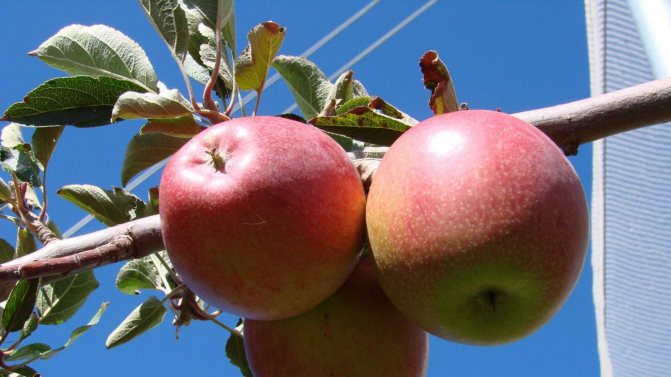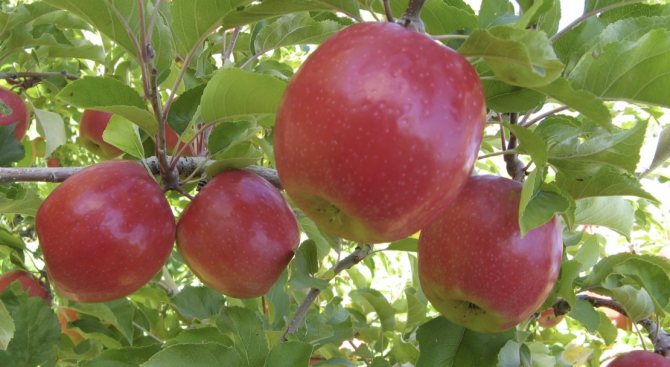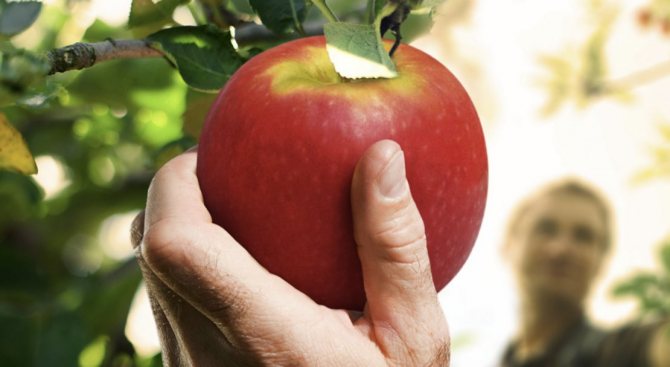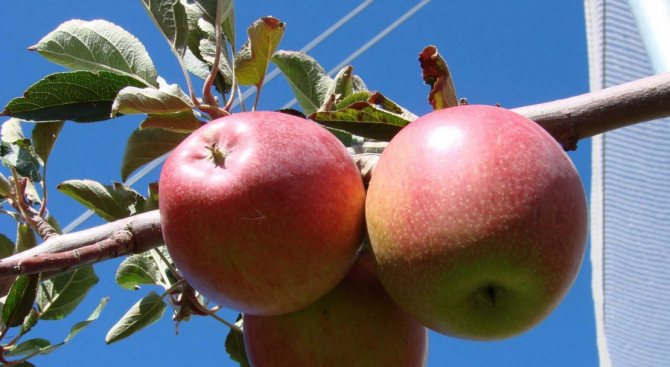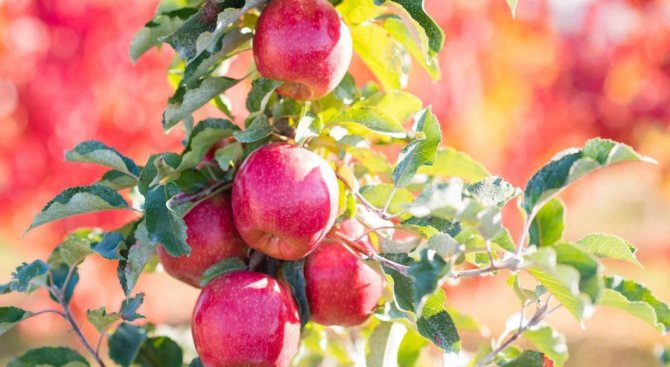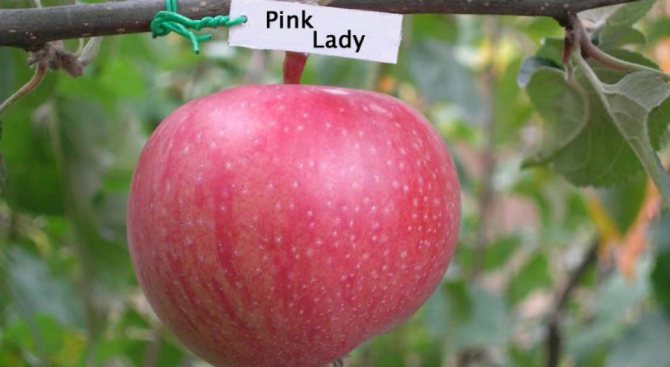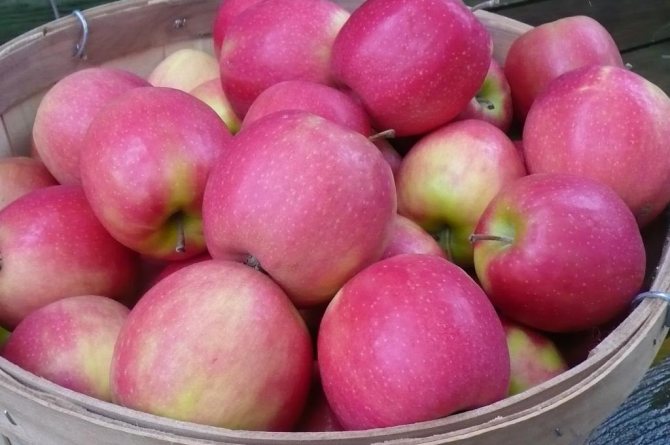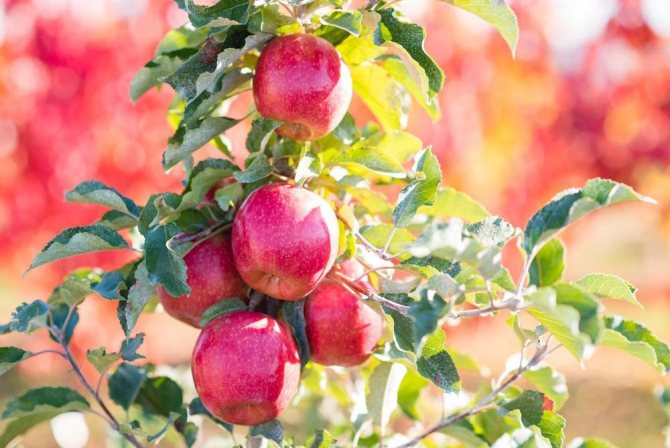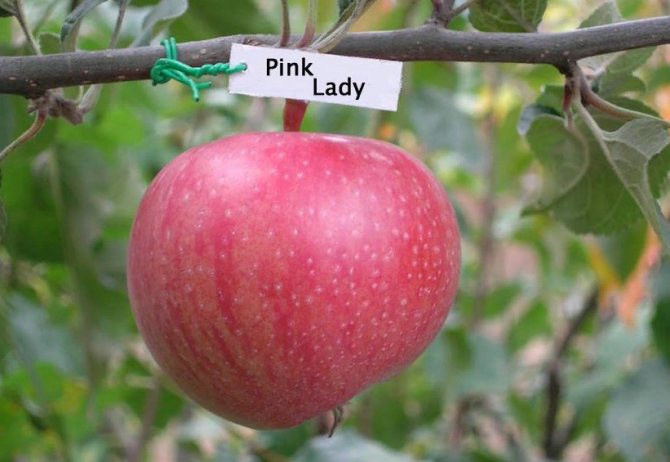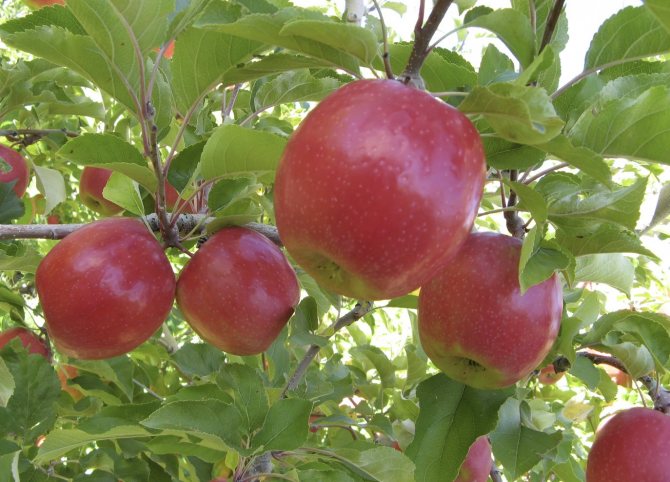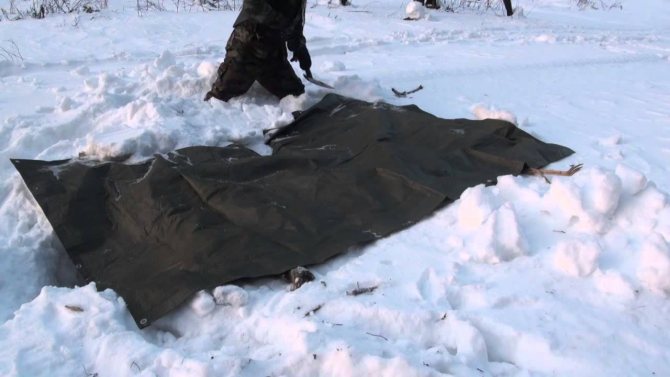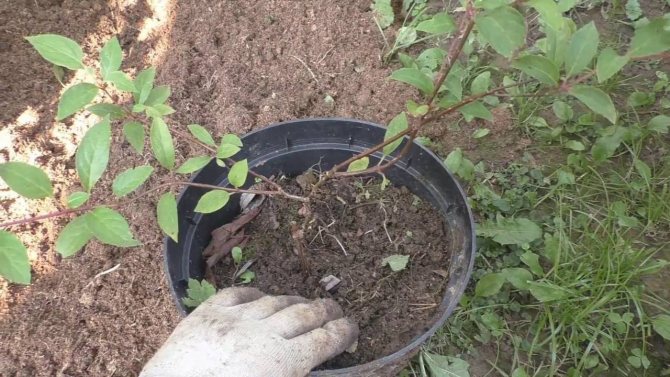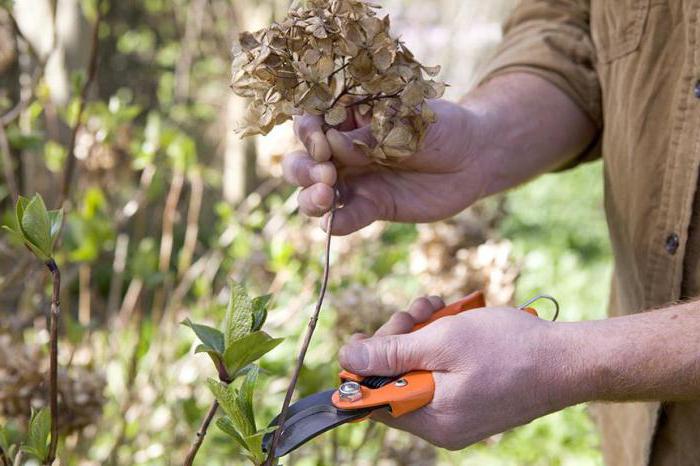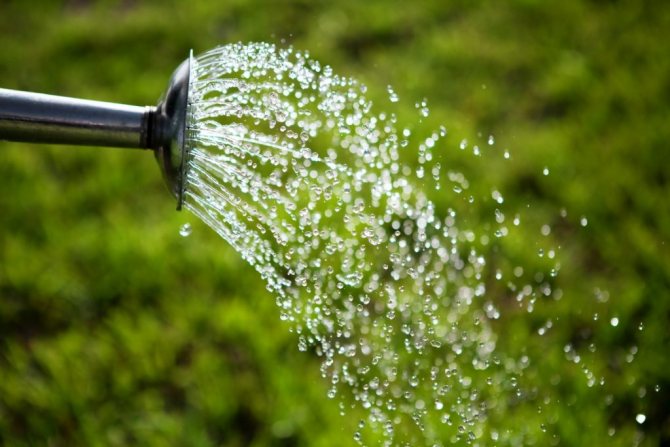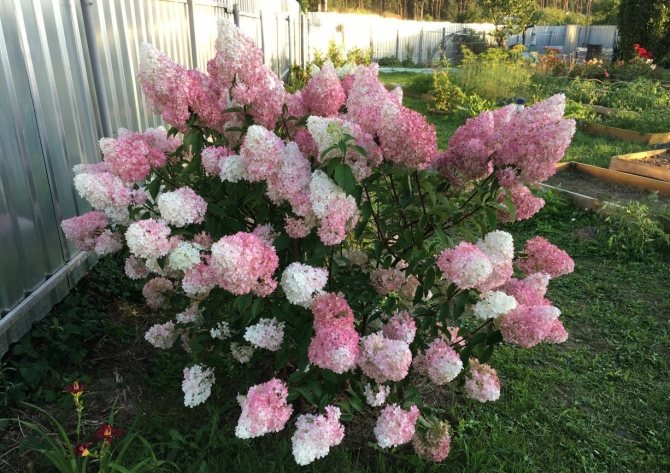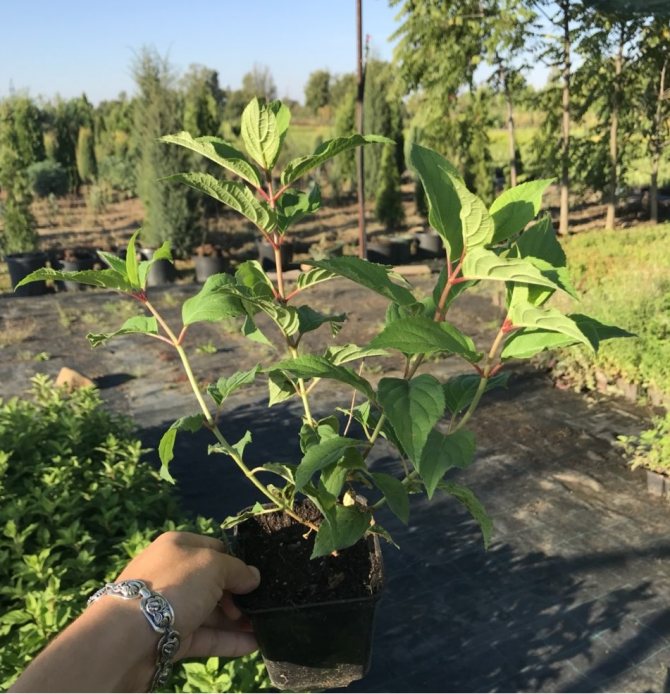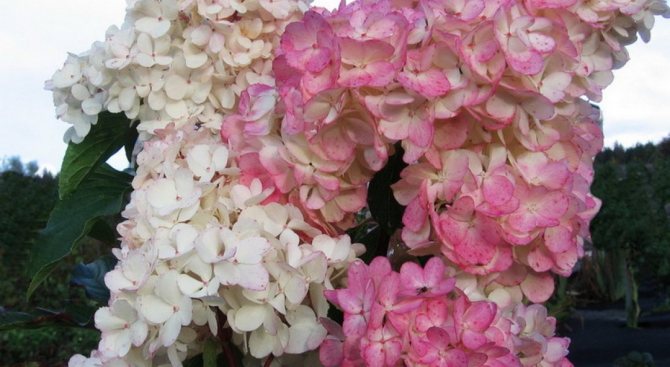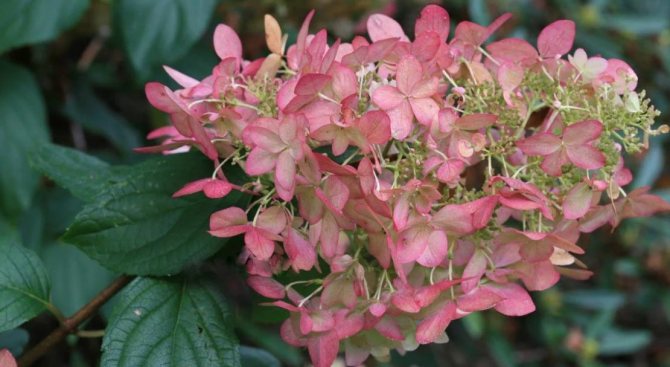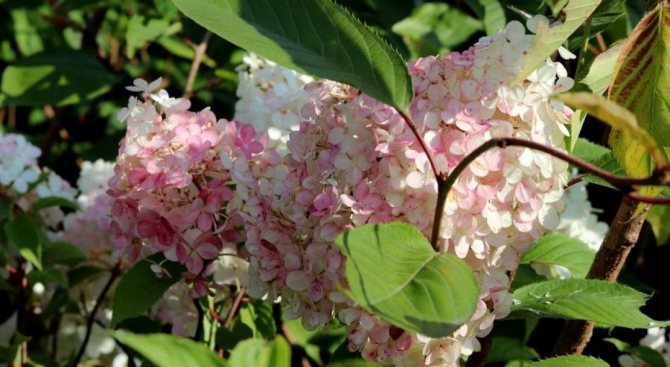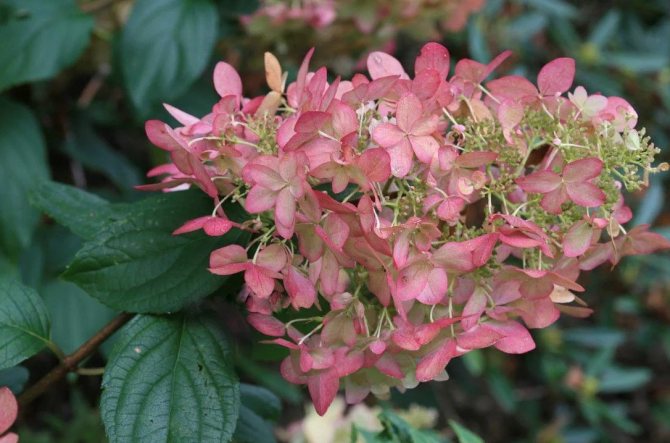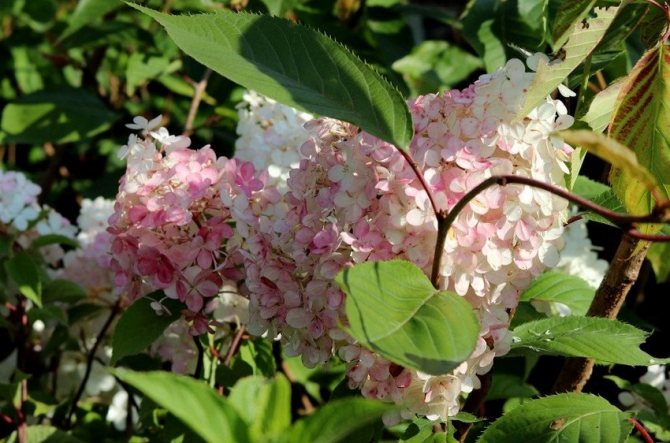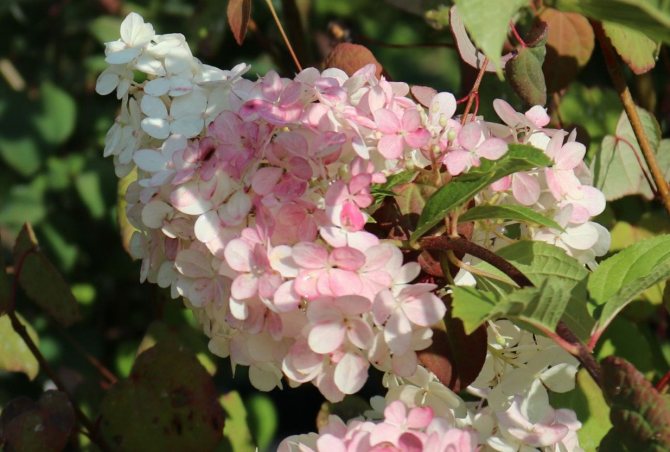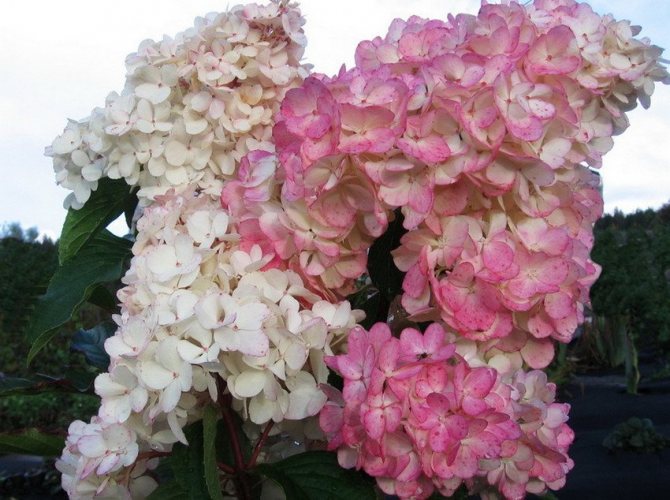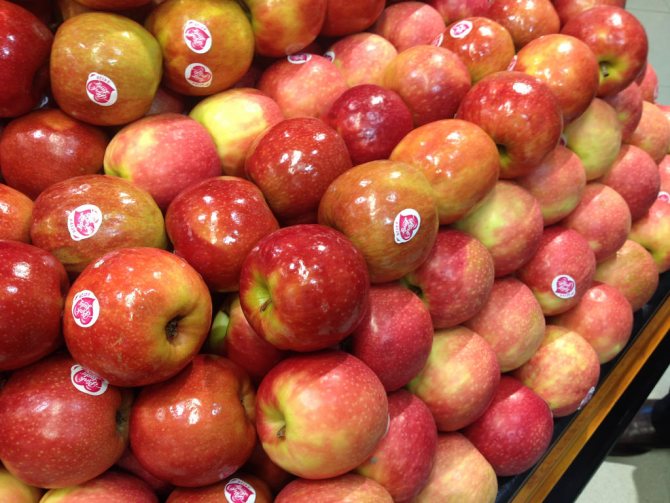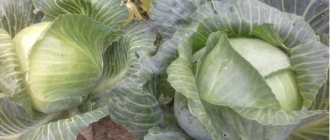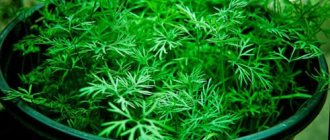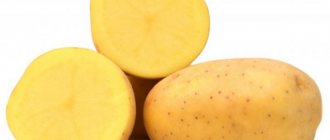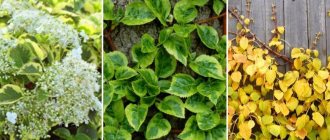Tatiana Panasenko Decorated the green lawn
For a long time I could not find a hydrangea variety to decorate a green lawn surrounded by thujas. But after reading about the unassuming properties of the Pink Lady hydrangea species, I decided to focus on it.
I began to collect information on the rules for growing this plant. It turned out to be a whole collection of useful tips that I share.
The color change of the petals throughout the summer makes Pink Ice the most exquisite variety.
general characteristics
The Latin name is hydrangea paniculata pink lady. An ornamental shrub can grow in one place for about 10 years.
It has high indicators of frost resistance - it can withstand temperatures as low as -29-30 ° C. Even with slight freezing, the shoots quickly recover.
Poorly tolerates drought, since it is considered a moisture-loving crop. With insufficient watering, it blooms poorly, weakly develops a young growth. With prolonged drought, the shrub may dry out.
External description:
- tall plant - 1.5-2 m, width - 1-1.2 m;
- branches are hard, spreading;
- leaves are wide, with a sharp tip and jagged edges, emerald;
- inflorescences panicle, consist of small pale pink flowers, circumference 25-30 cm, conical shape;
- the color changes depending on the flowering time - at the beginning it is creamy, light green, at the peak of decorativeness it acquires a pale pink, and at the end of the season a reddish tint.
Flowering is long - the buds bloom in mid-summer and dry out in the second half of October.
Landing rules
Subject to all the nuances and rules for planting seedlings, the selection of a good place and soil, you can grow a strong shrub that will maximize decorative qualities.
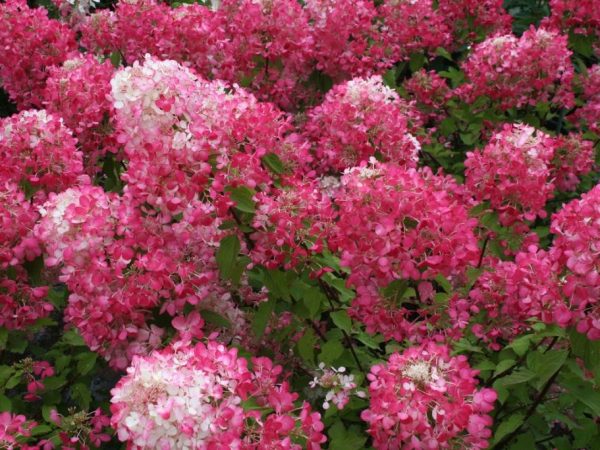
Hydrangea pink lady description and photo
Timing
Depending on the cultivation zone, hydrangeas are planted at different times of the year:
- in the south and in the Middle Lane, where the summer is long and warm, autumn planting is allowed - until the first half of October, so that the seedlings have time to adapt and prepare for winter, they are also planted in spring;
- when grown in regions with a harsh climate and unstable weather, spring planting is recommended - from mid-April to the second decade of May, by which time the last frosts will pass and the soil will warm up to 10-12 ° С.
Place and soil
It is a sun-loving crop that prefers to grow in an area that is well lit by the sun and protected from the winds. The best location would be the south or southwest side of the garden. It does not tolerate stagnant moisture in the soil, so it is better to plant on a hill. If this is not possible, good drainage must be ensured.
It is not advisable to plant next to tall trees, massive shrubs, which will absorb all moisture and nutrients, which will negatively affect the further growth and flowering of hydrangeas.
The soil is suitable for light, loose with a neutral level of acidity. The root system is superficial and well-branched, therefore, chalk and wood ash should not be added within a radius of 6 m. Sandy loam soil is not suitable for planting; loam will be the best option. If the soil is too heavy and knocked down, it is necessary to add a couple of buckets of perlite or vermiculite per 1 m².
Poorly tolerates the proximity of bulbous plants - tulips, hyacinths, daffodils, the cultivation of which requires annual digging of the soil. It is better to plant next to perennial bush crops - roses, azaleas, rhododendrons or undersized decorative deciduous flowers.
Before planting, last year's vegetation and garden debris are removed on the site, then they are dug deeply and leveled with a rake.
Seedling preparation
Further growth, immunity and decorativeness of the shrub depend on the quality of the planting material. Therefore, it is better to buy seedlings in a specialized nursery.
As a rule, they are sold in plastic containers so that their root system does not dry out before planting. In healthy plants, the stems are elastic, do not contain mechanical injuries and signs of damage by diseases and pests. The leaves and buds are fresh, juicy, do not crumble when shaking off the crown.
Choose grown specimens in which the aerial part consists of several densely leafy shoots. They have a strong and well-developed root system, which means they will successfully take root after planting on the site.
Immediately before planting, the seedling is removed from the pot, placed in cold water with the addition of a growth stimulant (Epin or Kornevin) and a small amount of potassium permanganate for an hour. The last component disinfects the roots and soil.
After soaking, the rhizome is cut to 2-3 cm in length, then dipped in a clay mash for two hours.
Landing technique
Planting consists of several stages:


Pink lady hydrangea paniculata
- Pits are dug at a distance of 1.2 m, 40 cm deep, 30 cm wide, sizes may vary depending on the volume of the root system.
- For 10 cm, the pit is filled with drainage - a mixture of dropouts and brick chips.
- Then, humus, peat, sand - 5 kg each, with the addition of ammonium nitrate - 15 g, superphosphate - 100 g and potassium sulfate - 80 g are poured in half, the resulting composition is mixed with the dug soil. To settle the embedded components, the pits are left for two weeks.
- Before planting, 20 liters of water are poured into each hole, after it is absorbed, the rhizome is lowered, the voids are filled with fertile soil, and watered.
- When planting, the root collar should remain on the ground surface.
- The plant is mulched with peat, sawdust or sheet compost.
- In the first two weeks, they are shaded from the scorching sun with agrofibre or burlap.
Description of the variety
Pink Lady is classified as an indeterminate variety. The bushes reach a height of 2 meters. In the presence of favorable climatic conditions, the growth of tomato can become quite strong. This negatively affects the yield of the crop, the indicator of which is significantly reduced. The bush needs pinching; when forming, it is necessary to leave 2 stems. The garter is mandatory, because the plant of this variety is very tall.
Ripening of the first fruits begins in the last decade of June. The ripening period of the variety is from 90 to 100 days. The ideal conditions for Pink Lady tomato are growing in a greenhouse in a region whose climate is not very hot. In the south, the culture grows well in open field conditions. If the fruits do not have time to ripen, then they can "reach". This fact will not in any way affect the taste and aromatic qualities of this tomato variety.
Care requirements
It is not difficult to care for this variety of panicle hydrangea, the main thing is to carry out all the manipulations on time and correctly.
Watering
This is a moisture-loving culture - the intensity of green mass growth, the abundance and duration of flowering depend on the frequency of watering. The ground in the near-stem area should always be slightly damp. It should not be allowed to dry out, especially on hot days, which can lead to the death of the shrub.
In the first 3 weeks, the seedlings are watered every other day so that they take root faster and start growing.
Subsequent watering is carried out taking into account seasonal precipitation. In summer, it is required - 2 times in 7 days (30-35 liters of water are poured under each bush).
In addition, it is necessary to moisturize in early spring, before flowering, after its end and in late autumn, when all the foliage has fallen.
On hot days, you can arrange sprinkling of the crown with warm water in order to prevent the leaves from wilting, to prevent the appearance of spider mites and to preserve the decorative effect of the hydrangea.
Loosening and mulching
A day after each moistening, surface loosening is required to a depth of 4-5 cm so as not to damage closely spaced roots. In parallel, weeds are removed, weeding the ground between the bushes.
At the end, add a thick layer of mulch - 15 cm. Use peat, humus or compost.
Top dressing
Balanced and regular nutrition will help ensure lush and long flowering, as well as intensive growth of green mass. The first time they begin to feed in the third year of development:


Hydrangea paniculata pink lady
- Until the blooming of vegetative buds, the near-stem circle is spilled with infusion of bird droppings or mullein. Dilute with water in a ratio of 1:15.
- In the budding phase, it is fed with a mineral complex - 20 g of superphosphate, 35 g of ammonium nitrate per 10 liters of water are consumed per 1 m².
- In mid-July, fertilize with granular store-bought fertilizer, which is prepared according to the instructions on the package. 30 liters of working fluid are poured under one bush.
- In the fall, when the hydrangea blooms under each bush, 50 g of superphosphate and potassium sulfate are added.
All dressings are carried out with watering, which improves the quality of assimilation of useful microelements and prevents the occurrence of burns on the roots.
Pruning
High-quality and timely pruning is the key to a lush and bright flowering of the shrub. It is held at the end of March, annually.
To form a compact and dense crown, 10 of the strongest and healthiest branches are left. They are shortened to 5-7 buds. Weak, twisted, broken off by the wind and shrunken stems are cut into a ring.
An old hydrangea that has stopped growing and blooms poorly needs rejuvenation - the shoots are completely cut off, leaving stumps 6 cm high from the ground. The next year, the shrub will begin to develop a young growth.
All manipulations are carried out using a sterile and well-sharpened instrument, in order to avoid infection and injury to the bark. After this procedure, the crown is treated with a fungicide - a solution of copper sulfate or Bordeaux liquid.
Preparing for winter
High-quality preparation for wintering includes a number of procedures:
- cleaning of fallen leaves, carrion and removal of faded buds;
- cutting out all non-viable parts that are damaged by wind, diseases or parasites;
- hilling of the near-stem zone with a thick layer of peat or humus - 15 cm;
- in young seedlings up to three years old, twigs are tied into a bunch, then wrapped in burlap.
All events are held on the eve of stable cold weather. In the southern zone, seedlings do not need insulation, they are only mulched.
The insulation material is removed in the spring, when the snow thaws and the threat of recurrent frosts has passed.
Reproduction methods
Hydrangea pink lady reproduces in two ways, each of them is considered effective, provided that all the rules for harvesting and planting the material are observed.


Hydrangea paniculata pink lady photo and description
Cuttings
Cutting shoots of the current year is carried out in the spring or summer in the phase of active growth. Apical stems 20 cm long with two internodes and several buds are chosen. Cut obliquely, cut off all the foliage in the lower part, cut the upper leaves in half.
Immersed in Kornevin's solution for an hour. Then they are planted in a wet mixture of peat, leafy earth and sand.Embedding depth 3-4 cm.
You can germinate cuttings both outdoors and at home. The main thing is to provide the seedlings with stable heat within 23-25 ° С, moderate humidity - about 60% and regular access to fresh air. The plantings are covered with a transparent film, aired every day, and watered as the earth dries.
After about 2-3 weeks, they will release new leaves - this is a sure sign of successful rooting. Then the shelter is removed, they continue to grow for another 1.5 months so that they are overgrown with roots, then they are seated separately in the garden.
Layers
This is the easiest and least time consuming method of breeding new seedlings. In the fall, when the shrub sheds its foliage, a flexible, lignified twig is chosen on it, close to the ground.
They are lowered into a previously dug groove in a horizontal position, pinned with staples, filled with a nutritious mixture of peat, humus and sand mixed in equal amounts.
Before freezing, the layers are sprinkled with straw, hay or fallen leaves, spruce branches are laid on top. Under such insulation, the branch will not freeze over the winter.
In the spring, when the above zero temperature stabilizes on the street, the twig is dug up, cut off from the mother bush. Divided into several segments, each must have roots. They are planted in the same way as purchased seedlings.
Pruning
Since inflorescences form only on new shoots of hydrangea, the plant needs strength to form them. Therefore, the old stems are pruned annually. Only in this case you will get a richly flowering beautiful bush covered with large inflorescences.


Pruning is desirable in the spring before the start of sap flow, before the start of active life.
Diseases and pests
Powdery mildew. Often damages this variety, manifests itself in the form of a white oily bloom on leaves, flowers, and later goes on to shoots. Infected areas darken, die off. The plant stops growing. First you need to cut out all the infected parts, then treat the hydrangea with a fungicide - Hom, Quadris, Topaz or Fitosporin.
Rarely affected by gray rot, rust. In the treatment, Bordeaux liquid, copper sulfate, Azocene solution or Ridomil gold are used.
Aphid. This insect settles in colonies on the underside of the leaf plate, feeds on its sap, which leads to wrinkling, drying out and shedding. Aphids leave a sugary bloom on parasitic areas, which is an ideal environment for the appearance of a sooty fungus. Therefore, at the first signs of infection, you need to take action - irrigate the crown with infusion of onions, garlic, tobacco or an ash and soap solution. If the treatment does not work, chemistry is used - Karbofos, Akarin or Fitoverm.
To preserve the decorativeness of hydrangea and its resistance to various types of infections, you must adhere to simple rules:
- buy fresh and healthy seedlings;
- before planting, disinfect the root system with an earthen clod in a solution of potassium permanganate;
- follow the landing pattern;
- keep the garden clean - regularly remove weeds, weed, loosen the soil;
- cut diseased stems, inflorescences and leaves in time;
- optimize care - water as the soil dries up, feed several times per season;
- in early spring and late autumn, spray the bush with a fungicide - copper sulfate or Bordeaux liquid.
How to use for garden decoration
In the modern landscape, pink lady hydrangea is one of the most sought-after crops. It is used in several compositions:
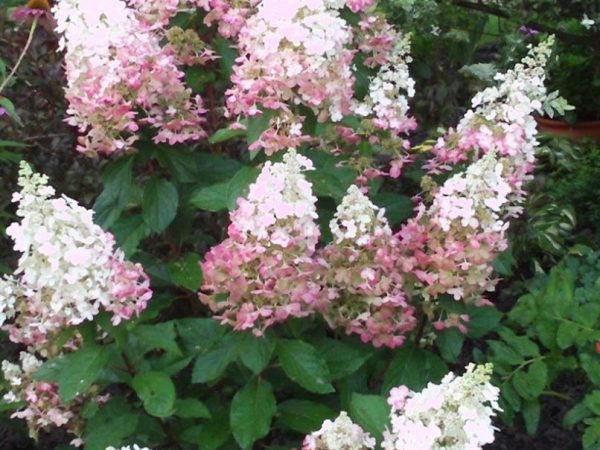

Hydrangea pink lady landing and care
- planted singly in the center of the garden plot;
- grown surrounded by other perennials - roses, azaleas, rhododendrons, dwarf conifers;
- combined with different varieties of hydrangeas, creating a lush and colorful decoration;
- planted near gazebos, terraces, benches, along the fence and in the alleys.
Description of fruits
The fruits of Pink Lady tomato variety are formed by clusters, each of which contains 6 - 8 tomatoes. Each individual fruit gains a mass of 230 to 290 grams. Thus, the entire bunch can reach a weight of 1.5 kg.
The yield of the variety is very high. The number of bushes growing on 1 square meter of land can give up to 25 kilograms of tomatoes, the shape of which is flat-rounded, and the color is pink.


The description characterizes the juicy pulp of Pink Lady f1 tomato as “very sweet and tasty”. The dense skin perfectly resists attempts by various external stimuli to damage the integrity of the specimen. Thanks to her, the transportation of tomatoes goes very well. The fruits can be stored for a long time.
Tomatoes are high in beta-carotene. The acidity level is low, which makes these tomatoes an excellent option for the formation of a children's diet. In salads, vegetable dishes and sandwiches, the use of sweet juicy fruits is very appropriate.
Testimonials
Thanks to numerous positive reviews, this variety has become very popular among experienced and novice gardeners:
- has a good degree of frost resistance, high immunity against diseases, pests;
- blooms profusely, for a long time, so you can enjoy its decorative effect until late autumn;
- successfully reproduces in different parts - if there is one bush on the site, you can independently grow varietal seedlings for landscaping your backyard area;
- It goes well with other perennials, which allows it to be used in garden decoration in different styles.
Hydrangea Pink Lady - Garden Nursery
Probably there is no such gardener who can indifferently walk past the lush flowering shrub, which is called garden hydrangea. This amazing plant grows mainly in Asia and America. But a Russian gardener should not be upset, there are several options that grow well in our latitudes, and now it is absolutely no problem to buy hydrangea seedlings in a garden nursery. Hydrangea, the varieties of which grow in Russia, is a shrub with a height of 1 to 3 meters. But in other climatic zones, tree-shaped species are found. Or completely exotic for the presentation of a domestic gardener - hydrangea-lianas, which beautifully twine around tree trunks. The color range is also amazing. But most often, the first acquaintance begins with the most common species, a shrub with large snow-white inflorescences. This is Anabel's hydrangea.

